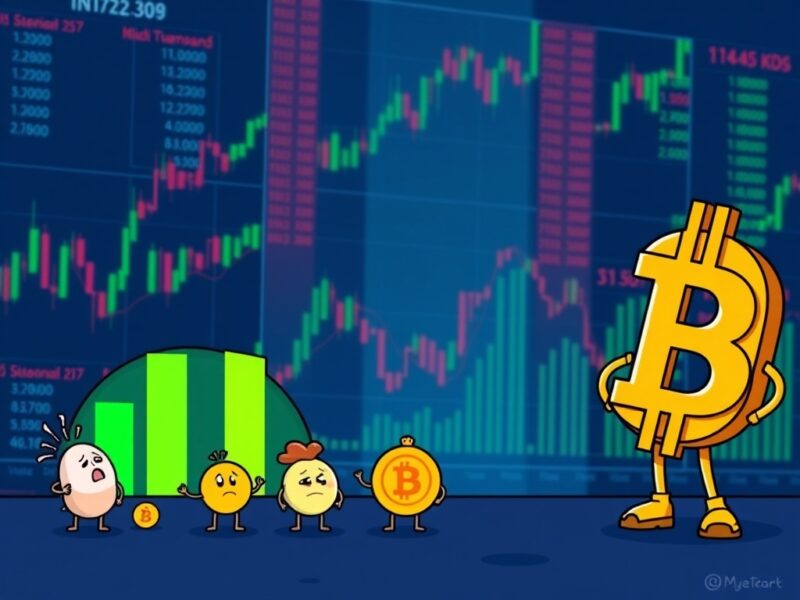El Salvador Fortifies Bitcoin Treasury Amid Quantum Threat Fears — Is This a Warning?
El Salvador, the world’s first nation to adopt Bitcoin as legal tender, has moved to strengthen the security of its national cryptocurrency reserve amid growing concerns over the threat posed by quantum computing.
On Friday, the National Bitcoin Office announced that it had split the country’s holdings, currently 6,284 BTC valued at more than $682 million, into 14 separate addresses.
Until now, the government’s Bitcoin treasury had been stored in a single address, a practice often criticized by security experts for exposing public keys to potential long-term vulnerabilities.
El Salvador Unveils Public Dashboard for Bitcoin Reserves After Redistribution
The office, which operates under the direction of pro-Bitcoin President Nayib Bukele, said the redistribution was part of a broader initiative to enhance the long-term safety of El Salvador’s “National Strategic Bitcoin Reserve.”
Officials emphasized that the move aligns with best practices in Bitcoin custody and also reflects preparations for the looming security risks posed by advancements in quantum computing.
Quantum computers, unlike traditional machines that process data in binary 0s and 1s, use “qubits,” which can exist in multiple states simultaneously. This allows them to process vast amounts of data at unprecedented speeds.
For Bitcoin, the concern centers on Shor’s algorithm, a mathematical technique demonstrated in 1999 that, if deployed on a sufficiently powerful quantum computer, could break the elliptic curve cryptography (ECDSA) securing Bitcoin’s public and private keys.
The threat is particularly acute for addresses whose public keys have already been revealed through transactions.
Once a Bitcoin transaction is broadcast, the public key becomes visible on the blockchain, theoretically giving a quantum adversary the ability to calculate the private key and redirect funds before a transaction confirms.
 Source: Bitcoin Office
Source: Bitcoin Office
By splitting funds across multiple unused addresses, each holding no more than 500 BTC, El Salvador has reduced the potential fallout of a future quantum attack. An unused Bitcoin address, whose public key remains hidden, is significantly less exposed.
The government said it would maintain transparency through a new public dashboard cataloging all reserve addresses, preserving visibility without relying on a single wallet.
Up to 7M BTC Vulnerable to Quantum Attacks, Researchers Say
The decision reflects rising urgency in the broader crypto sector regarding quantum threats. Cybersecurity specialists estimate that around 30% of Bitcoin’s circulating supply, roughly 6 to 7 million BTC, remains vulnerable in older address formats that directly expose public keys.
Researchers from Deloitte have suggested that as much as a quarter of all Bitcoin could eventually be at risk if quantum machines mature faster than expected.
Warnings from industry veterans have also intensified. In July, David Carvalho, CEO of Naoris Protocol and a former ethical hacker, cautioned that adversaries may already be harvesting blockchain data under a “harvest now, decrypt later” strategy, storing encrypted records today in anticipation of decrypting them with future quantum tools.
He suggested that such capabilities may emerge within years rather than decades, contradicting more conservative estimates placing “Q-day” between 2027 and the mid-2030s.
The security overhaul also comes as quantum research accelerates worldwide. Tech giants including IBM, Google, and Microsoft are pushing toward quantum processors with millions of qubits, a development that could dramatically shorten the timeline for breaking existing encryption standards.
U.S. federal agencies such as the National Institute of Standards and Technology (NIST) have been calling for adoption of quantum-resistant algorithms since 2022.
Financial institutions have begun acknowledging the risks. BlackRock has highlighted quantum computing in filings for its Bitcoin ETF, while Tether CEO Paolo Ardoino has also warned about the potential exposure of inactive Bitcoin wallets.
Bukele’s Daily Bitcoin Buy Claims Contradicted by IMF Review
El Salvador’s embrace of Bitcoin continues to evolve on multiple fronts, though recent disclosures suggest a more measured approach than President Nayib Bukele has long projected.
On July 15, the International Monetary Fund (IMF) released its first formal review of El Salvador’s Bitcoin program since approving a $1.4 billion loan in December 2024.
The report contradicted Bukele’s public claims of buying one Bitcoin per day, revealing that no new acquisitions have been made since February 2025.
Central Bank President Douglas Pablo Rodríguez Fuentes and Finance Minister Jerson Rogelio Posada Molina confirmed in a signed letter that “the stock of Bitcoins held by the public sector remains unchanged.”
On-chain movements observed in recent months, the IMF clarified, were internal transfers between hot and cold wallets, not fresh purchases. Assets gained through seizures or reallocations were similarly excluded from state-backed buys.
The IMF praised the government’s pivot, calling the changes an important step toward reducing fiscal risk and improving transparency. Among the reforms is a gradual withdrawal from public management of Bitcoin-related services.
The Chivo wallet, once promoted as a flagship adoption tool, will be privatized and removed from government oversight by July 2025. Officials say this shift reduces strain on public finances while keeping the wallet operational under private control.
At the same time, El Salvador continues to position itself as a symbolic leader in Bitcoin adoption.
In August, the government launched “What is Money?”, a financial literacy program aimed at children as young as seven.
It also announced Bitcoin Histórico, a global summit framed as both a celebration of monetary sovereignty and a milestone in digital transformation.
Bunları da Bəyənə Bilərsiniz

Hunan Yueyang police dismantled a black-and-gray industry chain operating under the guise of buying and selling virtual currencies, with the amount involved being nearly 170 million yuan.

Altcoin Season Index Plummets: A Crucial Warning for Crypto Investors
